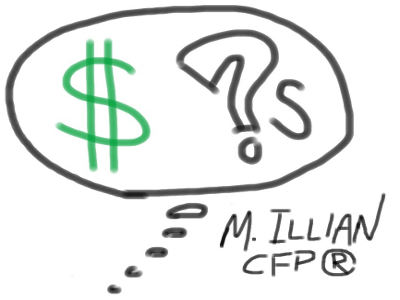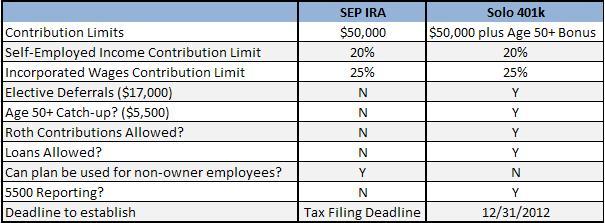 David, a music producer, knows his business is beginning to hit its stride because he is now able to save more than the maximum IRA contribution of $5,000. As larger record contracts come in, he also must now pay quarterly estimated tax payments. “Uncle Sam is killing me” is a line he’s been sharing regularly with his friends.
David, a music producer, knows his business is beginning to hit its stride because he is now able to save more than the maximum IRA contribution of $5,000. As larger record contracts come in, he also must now pay quarterly estimated tax payments. “Uncle Sam is killing me” is a line he’s been sharing regularly with his friends.
At this point, David should look into “employer-sponsored” retirement plan options. These retirement savings accounts offer tax preferences not available elsewhere. The SEP IRA and solo/individual 401(k) are the two most common retirement plans chosen by successful self-employed people due to their high contribution limits.
David expects his business income for the next several years to be at least $100,000. Because David’s business is unincorporated, he can contribute up to a limit of 20% of adjusted business income into a SEP IRA, or approximately $20,000.
The solo 401(k) offers greater contribution potential. SEP IRAs only offer employer contributions, but a solo 401(k) allows a business owner to split a retirement contribution into two parts: employee and employer contributions. In David’s case, he can count the first $17,000 of his contribution as an employee contribution, plus he can then contribute an additional $20,000, accounted for as an employer contribution, for a total of $37,000. If David’s goal is to maximize his retirement contributions, clearly the 401(k) is the way to go.
Saving the maximum amount will reduce David’s taxable business income down to $63,000. Before the deduction, this $37,000 was taxed at 15% (federal income taxes) and 5.75% (state taxes). This means David can reduce his current tax payments by $7,677.50 by making a $37,000 retirement plan contribution. Take that, Uncle Sam!
David’s wife also helps run the business, which makes her eligible to contribute as well. However, any additional employees will make David’s business ineligible for the solo 401(k).
The solo 401(k) has the added advantage of being able to contribute the employee contributions into a Roth account that will never be taxed again. However, with added flexibility comes some added paperwork to set up and maintain the plan. Plan updates need to be recorded each year. Once the plan balance reaches over $250,000, tax form 5500 must be filed annually. And if any employees are hired, a transition must be made to a full-fledged 401(k) plan once they have completed one year of service.
In order to stay on track with his retirement goals, David plans to save 12% of his income every year. Because he does not expect to save any more than 20% of his adjusted business income, I recommend the SEP IRA because it’s easier to set up and maintain.
Numerous mutual fund, brokerage, and discount brokerage firms offer packaged solo 401(k) and SEP IRA plans. Vanguard is one of the best because of its low costs and superior fund options. And knowing that his retirement savings is on track will be music to David’s ears.

2 Responses
Eric
He also avoids Social Security and Medicare (payroll taxes) on the $20,000 employer contributions, which can be estimated as another 11% tax.
This doesn’t sound correct because the IRS forms allow the deduction for the solo 401k on the 1040 form, whereas the self employment tax is determined based on schedule C income. How could part of the 401k deduction decrease self employment income? Where would the deduction show up on the tax return? Is there someplace else to put the 401k employer deduction besides Form 1040?
Matthew Illian
Eric, good eye. I have edited my post to exclude the piece about being about to avoid Social Security and Medicare taxes in the case of an unincorporated Schedule C filer. This is an important difference between those self-employed companies that become incorporated and those that don’t. If this company had been a C or S corp., they can avoid paying these taxes when making employer contributions to a SEP IRA or 401(k) and I wrongly assumed that this would be the case of an unincorporated business. I count this as another advantage to incorporating your business.